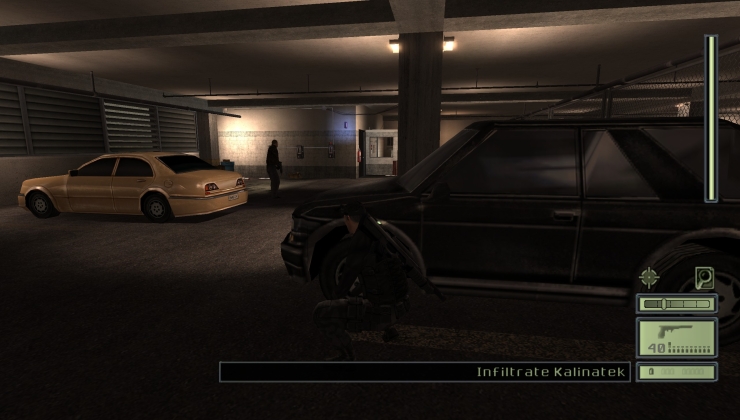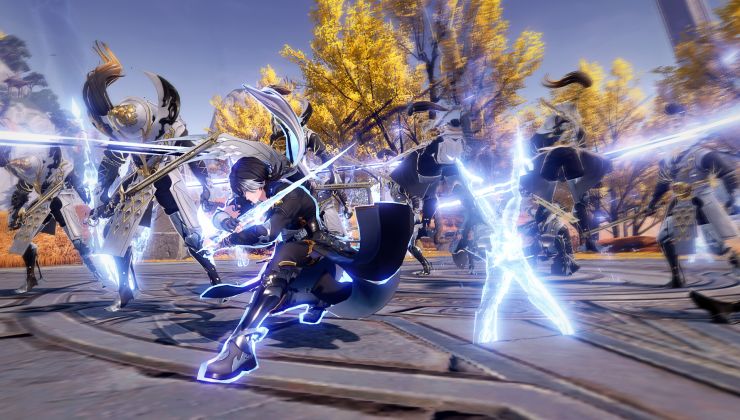Today, AMD are bringing out the big guns with the formal release of their next generation desktop GPUs with the AMD Radeon RX 6800 and the RX 6800 XT. Announced back in late October, these cards are AMD's first to come with hardware accelerated Ray Tracing support. Although for Linux, we're still waiting on The Khronos Group to formalise the cross-vendor Ray Tracing Vulkan extensions for that.
Here's a reminder of the specifications:
| RX 6900 XT | RX 6800 XT | RX 6800 | |
|---|---|---|---|
| Compute Units | 80 | 72 | 60 |
| Process | TSMC 7nm | TSMC 7nm | TSMC 7nm |
| Game clock (MHz) | 2,015 | 2,015 | 1,815 |
| Boost clock (MHz) | 2,250 | 2,250 | 2,105 |
| Infinity Cache (MB) | 128 | 128 | 128 |
| Memory | 16GB GDDR6 | 16GB GDDR6 | 16GB GDDR6 |
| TDP (Watt) | 300 | 300 | 250 |
| Price (USD) | $999 | $649 | $579 |
| Available | 08/12/2020 | 18/11/2020 | 18/11/2020 |
For running them on Linux, the driver situation isn't the best. AMD have put out the Radeon Software for Linux version 20.45, which adds support for the Radeon RX 6800 Series but that driver only officially supports Ubuntu 20.04, RHEL/CentOS 7.9 and RHEL/CentOS 8.2. For Mesa drivers, you're going to need Linux Kernel 5.9, Mesa 20.2 (or newer) and also LLVM 11.0 which means most normal distributions will be missing out unless you're prepared to do major manual upgrades. So, unless you really know what you're doing with everything, you will likely want to hold off.
If you do manage to find one because, as expected, most places are sold out and you get everything it needs setup - expect to see some incredible performance. We don't get sent any hardware from AMD, so we're going by what others have been cooking up. It seems Level1Linux on YouTube are very happy with it, and the Phoronix benchmarks show them doing well too. From a price point of view, the performance does seem pretty amazing considering how close it appears to be with the NVIDIA 3080 and if you prefer the open source side of things it doesn't get better than this.
Quoting: tuubiNothing wrong with that. I often do the same thing. In fact, I think the last time I bought a new GPU (not used) was the GTX 460. (I'd have to look at records because my memory on this doesn't feel solid.) And the last game I pre-ordered was either Bloodborne or Dark Souls III. But, my comment was directed at the thought of being able to buy the card at release and slap it in and go. There is also nothing wrong with wanting that to be possible.Quoting: 14You're saying this like it's somehow a huge struggle, or a show of weakness maybe. :DQuoting: slaapliedjeYou almost need to be running a rolling release like Arch to be able to just pop the card in and have it go.Sounds like a plan to me. Rolling release is where it's at when you're a PC gamer. Or, you can wait, I guess, and watch not only Windows gamers enjoy their AMD cards sooner but also other Linux gamers.
I pretty much never buy hardware before it's been on the market for a few months, or games on day one. For GPUs, good reasons to wait are lower prices, more third party models with perhaps better cooling options, more mature drivers etc. And games, well I'm not really into multiplayer, and it really doesn't matter to me if a single player game is brand new. I guess I'm patient. Not that it matters: A game that's a year old (or ten) is just as good as it was at launch. Or most likely better, with whatever patches, new content etc. that have been released since. And obviously it's cheaper as well.
EDIT: OK, I was close. The GTX 460 purchase was at the end of the year 2010. I experienced a driver related problem when switching my secondary monitor back and forth between a CRT and a TV in Windows 7. I was so fed up with it that I jumped to an HD 6870 in 2011. (And it solved the problem.) So, I've been upgrading to used cards the last nine years. Hehe
But I am tempted by this 6800 series. I like the MSI coolers though, because the fans turn off when the card is cool enough. My PC is very quiet when I'm not gaming or compiling.
Last edited by 14 on 22 Nov 2020 at 4:18 pm UTC
Quoting: 14I like the MSI coolers though, because the fans turn off when the card is cool enough. My PC is very quiet when I'm not gaming or compiling.It's not only MSI though. My Sapphire's fans aren't turning right now, and I've seen ASUS advertise the same feature. But yeah, it's nice.
Quoting: tuubiDid you have to do anything special to get it to work, or was that the default behavior? I had to write a script and turn it into a systemd timer for my fans to turn off :(Quoting: 14I like the MSI coolers though, because the fans turn off when the card is cool enough. My PC is very quiet when I'm not gaming or compiling.It's not only MSI though. My Sapphire's fans aren't turning right now, and I've seen ASUS advertise the same feature. But yeah, it's nice.
Quoting: 14No, I haven't done anything. This is default hardware behaviour.Quoting: tuubiDid you have to do anything special to get it to work, or was that the default behavior? I had to write a script and turn it into a systemd timer for my fans to turn off :(Quoting: 14I like the MSI coolers though, because the fans turn off when the card is cool enough. My PC is very quiet when I'm not gaming or compiling.It's not only MSI though. My Sapphire's fans aren't turning right now, and I've seen ASUS advertise the same feature. But yeah, it's nice.
The fans seem to start spinning at 60℃, and stop again when GPU temperature falls below 50℃. I can't actually hear the fans starting up from where I normally sit, but I checked using hw sensors. I'm using the default "performance" bios, not the "silent" option.
Quoting: LightkeyLooking at benchmarks on Windows, I don't know what you are talking about, RX 5700 on Linux sits just where it should, which is just between RTX 2070 and RTX 2070 SUPER...Quoting: GuestDo we already know when less power-hungry cards will be announced/available?The Radeon RX 6700 (XT) cards are reported to be coming out in January.
Also, I am surprised nobody commented on the astonishing feat that AMD Mesa developers have pulled off here.
Fixing the PCIe reset bug (watch the Level1Linux video) that plagued the last few generations and finally delivering the same performance compared to NVidia. If you look at the Phoronix results, you will notice that the Radeon 5700 XT is far slower than it is on Windows, relative to NVidia's cards.
And all that on day one, which is a first for AMD's Mesa drivers, I think!
Last edited by omer666 on 23 Nov 2020 at 5:45 am UTC
Quoting: LightkeyIf you look at the Phoronix results, you will notice that the Radeon 5700 XT is far slower than it is on Windows, relative to NVidia's cards.Is it though? Haven't looked into these recently (haven't been on the market for new hardware) but Phoronix tests seemed to put the 5700 XT around the level of an RTX 2070 (non-Super), and seems like reliable testing sites like Tomshardware give it similar relative figures on Windows. This depends on the benchmark of course, as native Linux ports and games running on proton might have different quirks on AMD and Nvidia hardware than they do on Windows. I definitely can't see the "far slower" part.
Quoting: ShmerlMy Sapphire Pulse RX 5700XT turns fans off under low load, without any custom fan curves.I think it's a fairly standard feature now, right? My 2080 does the same thing. Hell, my CPU cooler's fans don't both run all the time, and the second one only kicks on under load. Then again, I have a heatsink on it that is rather massive. https://noctua.at/en/products/cpu-cooler-retail/nh-d15
I can't wait to get my hands on one of them.
Quoting: ShmerlVery nice. If only they'd be available in stores :)Seems like the scalpers are already all over ebay, and they're opening the box too.
Much as I want the card, I'm going to wait for proper prices. My only chance of getting one is through e-tailers, Malta is a country of Nvidia fanboys, the shops here barely stock AMD GPUs, sometimes even Ryzens are lacking.
Last edited by Avehicle7887 on 24 Nov 2020 at 9:58 am UTC








 How to setup OpenMW for modern Morrowind on Linux / SteamOS and Steam Deck
How to setup OpenMW for modern Morrowind on Linux / SteamOS and Steam Deck How to install Hollow Knight: Silksong mods on Linux, SteamOS and Steam Deck
How to install Hollow Knight: Silksong mods on Linux, SteamOS and Steam Deck